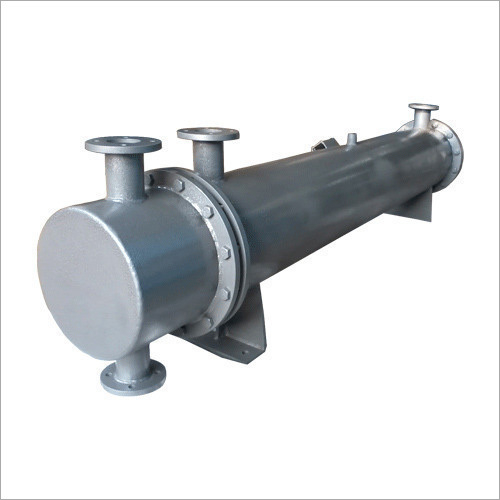Shell And Tube Heat Exchanger
Product Details:
- Number of Pipe 1
- Condition New
- Structure tube Heat Exchanger
- Voltage 220-440 Volt (v)
- Click to View more
Shell And Tube Heat Exchanger Price And Quantity
- 1 Unit
Shell And Tube Heat Exchanger Product Specifications
- 1
- New
- 220-440 Volt (v)
- tube Heat Exchanger
Shell And Tube Heat Exchanger Trade Information
- Cash Advance (CA)
- 1 Week
- As per requirement
- All India
Product Description
In industrial applications, a shell and tube heat exchanger is a common tool for effective heat transfer. It has a cylindrical shell with a collection of tubes inside of it. One fluid can flow through the shell while another can do so through the tubes. The layout offers plenty of surface area for efficient heat transfer between the fluids. High heat transfer efficiency, adaptability across various temperature and pressure differentials, compact size, simple maintenance, dependability, and adaptable design are all advantages. HVAC systems, chemical processes, power generation, and other industries where effective heat transfer and thermal management are essential for optimal operations all use shell and tube heat exchangers.
A shell and tube heat exchanger has the following characteristics and advantages:
Features of Shell And Tube Heat Exchanger:
1. Design of the Shell: The tubes are enclosed in a protective shell that is normally composed of metal.
2. Heat transmission between two fluids is facilitated by a tube bundle, which is a collection of smaller tubes positioned inside the heat exchanger's shell.
3. Depending on the use and desired fluid flow, tubes can be straight or U-shaped.
4. Baffles: To improve heat transfer efficiency and guide fluid flow, baffles are inserted inside the shell.
5. Materials for Tubes: Materials like copper, stainless steel, or titanium are frequently used to make tubes. These materials are chosen based on their compatibility with the fluids and level of corrosion resistance.
Benefits of Shell And Tube Heat Exchanger:
1. High Heat Transfer Efficiency: Due to their huge surface area and turbulent flow, shell and tube heat exchangers have great heat transfer capabilities, resulting in an effective thermal exchange between fluids.
2. They are excellent for a variety of industries, such as HVAC, chemical processing, power generation, and oil refineries, because they can manage a wide range of temperature and pressure differentials.
3. Compact Size: Shell and tube heat exchangers' small size enables effective space utilisation and installation in confined spaces.
4. Simple Maintenance: The design of the removable tube bundle makes cleaning and maintenance easier, resulting in less downtime and associated costs.
5. Shell and tube heat exchangers are renowned for their sturdy structure, which ensures long-term dependability and tolerance to harsh environments.
6. Design Flexibility: The design can be altered to accommodate particular process needs, such as multiple-pass configurations, various tube sizes, or alternative building materials.
In general, the advantages of shell and tube heat exchangers are effective heat transfer, adaptability, compactness, and durability. They are frequently utilised in sectors of the economy that require dependable and efficient thermal management, allowing effective energy utilisation and upholding ideal working conditions for various fluids.
Other Detail:
""> Material : Metal
Product details
Brand | SCH |
Material | MS to Copper & MS to SS |
Surface type | Coated |
Country of Origin | Made in India |
Usage/Application | Hydraulic and Industrial Process |
I Deal In | New Only |
Medium Used | Oil |

Price:
- 50
- 100
- 200
- 250
- 500
- 1000+








